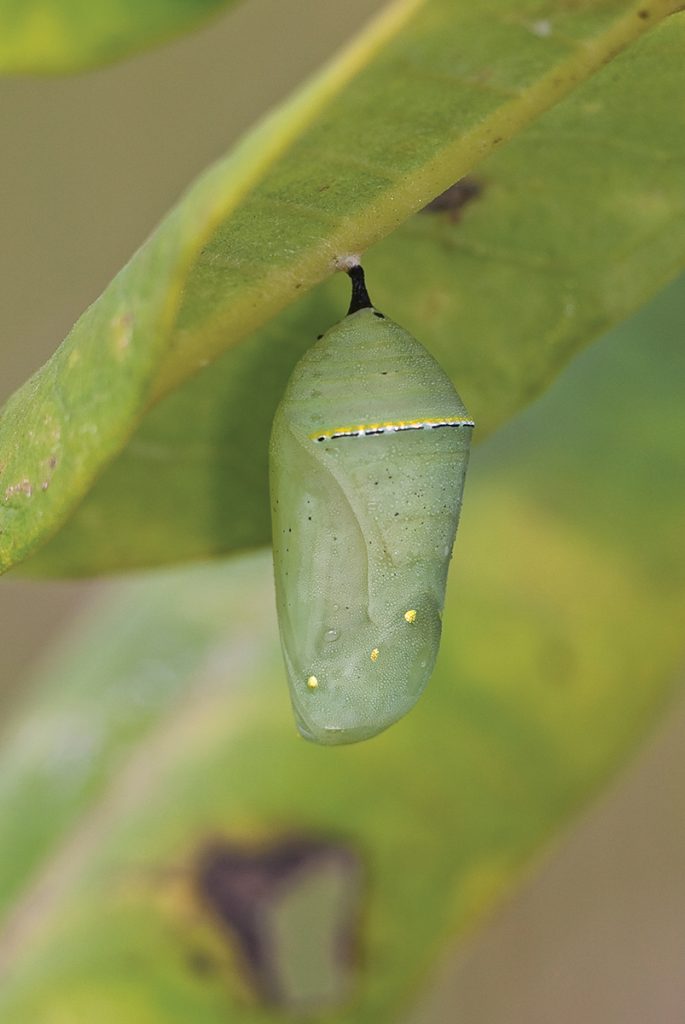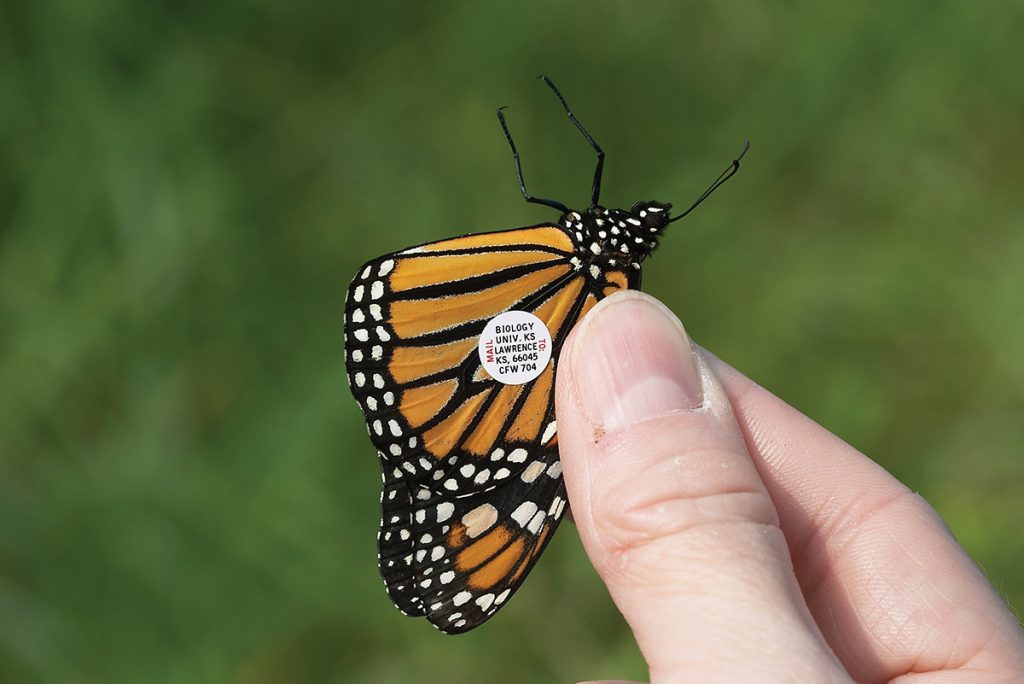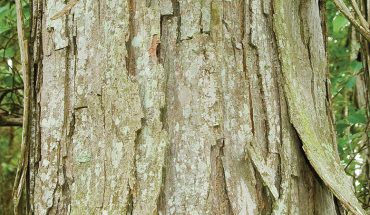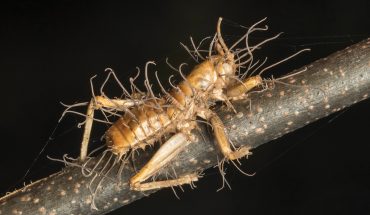These beautiful insects travel thousands of miles each year to get to their winter homes in Mexico. Right now, they’re moving through North Carolina.
Words and photographs by Mike Dunn
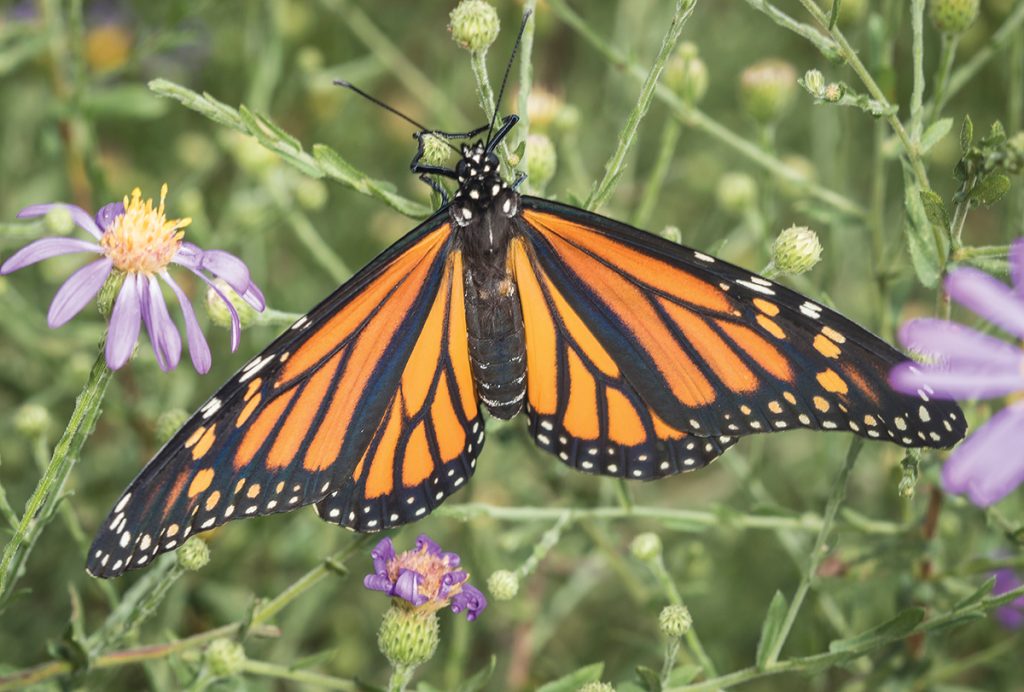
With their distinctive orange-and-black wings, monarch butterflies are probably the most recognized butterfly in North America. These intrepid insects are master voyagers, too, often traveling over 100 miles per day to complete their annual migration!
My interest in monarchs began when I started working at the North Carolina Museum of Natural Sciences in 1989. My job included working with schools across the state to train teachers on how to effectively use their grounds as an educational resource. We helped teachers and students create mini-habitats for wildlife such as birds and butterflies using native plants. Monarchs are great ambassadors for pollinators and other wildlife that benefit from such gardens.
One fall, a teacher in Western North Carolina mentioned that I needed to meet a person they called “The Monarch Lady,” who provided programs to the community about the unique butterflies. On my next workshop at that school, The Monarch Lady stopped in to talk. At first, I was taken aback by what she was wearing: a necklace with a monarch chrysalis as a pendant. I was relieved to find out it wasn’t real, but a carefully sculpted piece of jade with gold as the spots — quite realistic and beautiful.
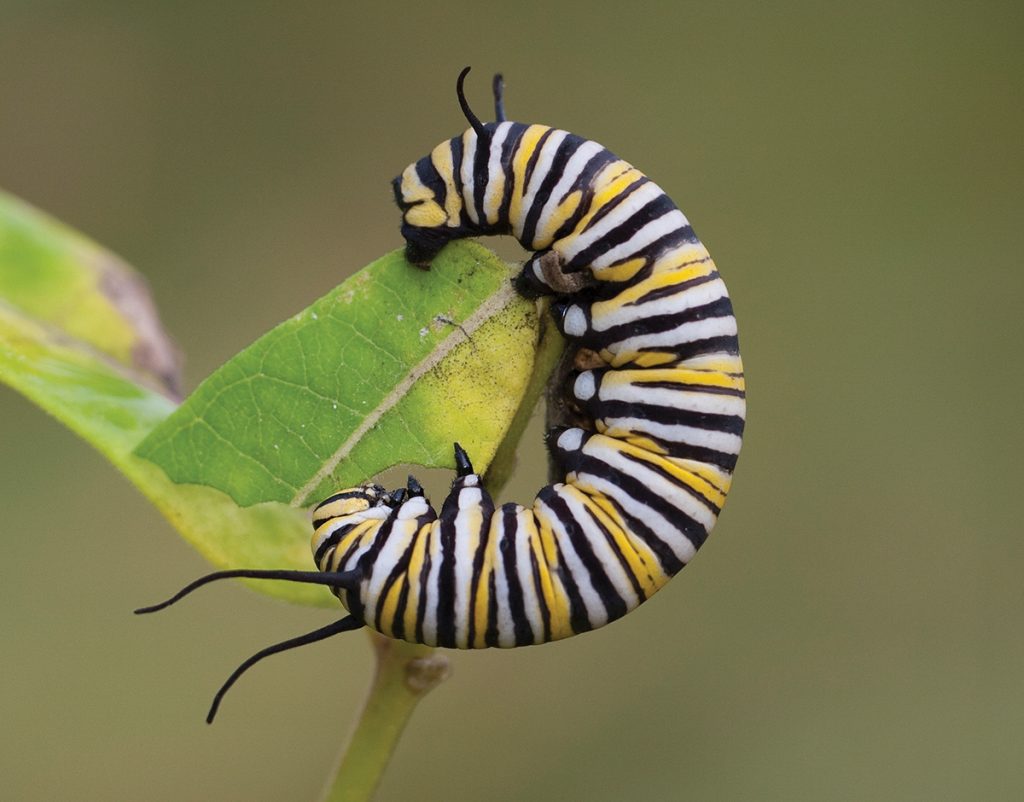
Monarch butterflies are, in fact, quite beautiful in all their forms. The black-and-orange wings of adult males and females are similar, except that male monarchs have a black spot on a vein in each hind wing, but females do not. (These spots are scent glands used to attract the females.) Each female can lay well over 300 eggs, each one an exquisite miniature sculpture, somewhat conical in shape and lined with tiny ridges. In three to five days, the caterpillars hatch and begin feeding.
Monarch caterpillars have black and yellow stripes and a pair of black tentacles on either end. After 10 to 14 days of almost constant feeding, they will increase their body mass almost 2,000-fold. Along the way they shed their skin, or molt, five times. (Some gardeners confuse monarch caterpillars with the more common larvae of black swallowtails, which also are black and yellow, but lack the tentacles. The easiest way to be sure is to see which type of plant they are feeding on. Monarch larvae are found exclusively on milkweed plants, while black swallowtail caterpillars feed on plants in the parsley family.)
As they feed, the larvae incorporate the plant’s toxins into their bodies, making them unpalatable to birds. But there are plenty of other predators out there that can ingest the toxins (including wasps, spiders and ants), and it’s estimated that fewer than 10% of these caterpillars will make it through their larval stage. When those that do survive are ready, they will start crawling to find a suitable place to form a chrysalis, which is jade green with gold dots. About 24 hours before the adult butterfly emerges, the chrysalis changes color so you can see the wings inside. After the butterfly splits the chrysalis open and pulls itself out, it will pump fluid from its abdomen through the veins in its wings to expand and harden them for flight, the whole process taking an hour or more. Most butterflies live four to six weeks, during which time they will find nectar and mate.
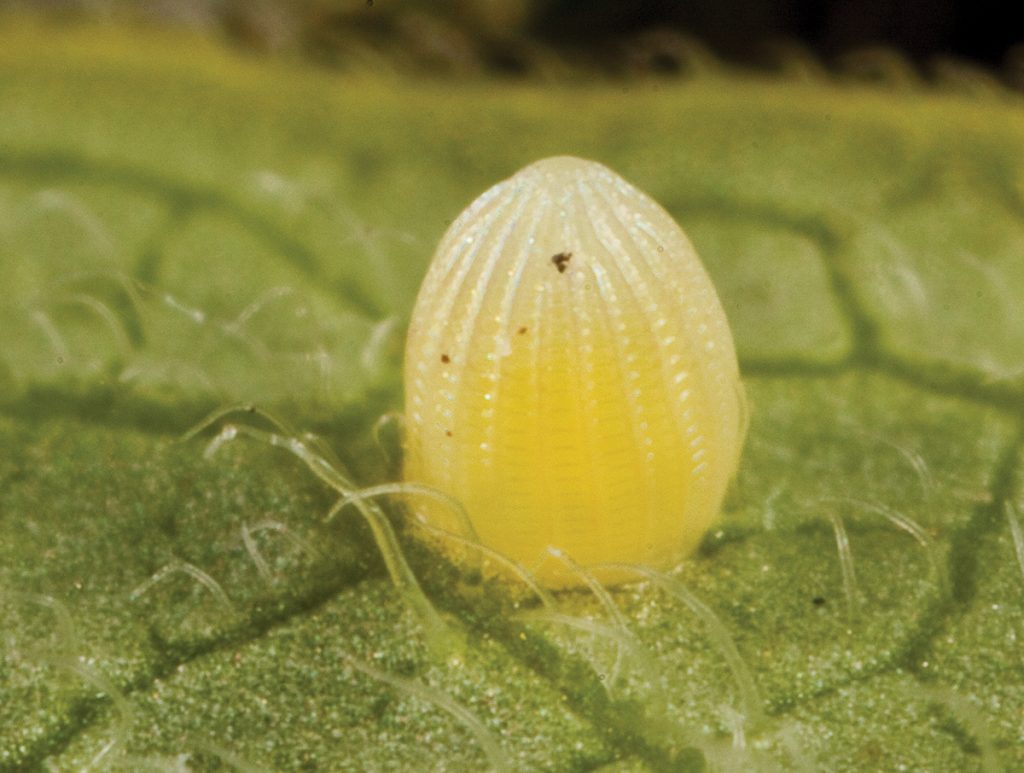
A few years after I started helping schools with butterfly gardens, I learned about a monarch monitoring program called Monarch Watch Tagging Program. This program has origins in work done by Professor Fred Urquhart of the University of Toronto. In 1976, after almost 40 years of leading hundreds of butterfly enthusiasts in a novel tagging program, Professor Urquhart was the first to scientifically document the fact that eastern monarch butterflies — which spend summer months in the northern United States and Canada — overwintered in high mountain forests in Central Mexico.
To continue and broaden this research, the Monarch Watch program was initiated in 1992 at the University of Kansas. It enlists thousands of citizen scientists across the U.S. and Canada to tag monarchs by placing stickers with unique numbers on their wings to track their migration. Monarch Watch has allowed scientists to further study the dynamics of their spectacular fall migration and explore subjects like the geographic origins of monarchs that reach Mexico, the timing and pace of the migration, and mortality during the migration. Through this research, we’ve learned that it can take three to four generations of monarch butterflies to complete the full migration. Each butterfly travels north or southward over its lifetime, depending on the season, with some butterflies living much longer — up to eight months — to complete the trip to Mexico.
I ordered my first tagging kit a few years after starting my work at the museum. Each kit comes with tags, instructions, a data sheet and helpful background information. The tags themselves are small self-adhesive dots, each with a unique number. When properly done, adhering the tags does no harm to the butterfly and does not impair its flying. Tagging monarchs was a huge hit with teachers and a great starting project for a new school year, since monarchs migrate through North Carolina from August to October.
One fall, on a visit to my parents’ home in the mountains of southwest Virginia, I brought my tagging gear, since my father had told me about the many monarchs that migrated through his farm each year (migrating monarchs are more abundant in our mountains and along the coastline than they are in the Piedmont).
At first, I think my father — an old-school country man at heart — was a little embarrassed that the neighbors might see his “boy” running around the property with a butterfly net. But when I showed him how to tag a butterfly, he began to get interested. I gave him the net, and he swept it at a monarch, and missed! I knew then that I had him — he never wanted me to beat him in anything.
Dad soon started tagging monarchs on his own. Every year, I bought an extra kit or two for him. One day, I got a call from Monarch Watch, congratulating me on one of my tags being recovered in Mexico. When we compared tag numbers, it wasn’t mine, but one of my dad’s. He was delighted when he received a Monarch Watch Certificate of Appreciation stating one of the monarchs he had tagged on September 20, 2003, was recovered in the monarch preserve site in El Rosario, Mexico, on March 1, 2004. That butterfly had flown a distance of 1,622 miles from where it was tagged!
After Dad’s passing in 2019, I hired a man to do some tree removal at my parent’s place. When he arrived, he surprised me by telling me that he knew my father as “the monarch man.” Apparently, Dad had gone to his child’s school to talk about monarch migration and tagging. That made me smile and feel proud of my gruff ol’ dad for learning to love monarchs and share their amazing story.
Another highlight in my journey with monarch butterflies happened over 20 years ago, when I visited some of the monarch preserves in Mexico. They are all in high-elevation forests (above 9,000 feet) in the mountains not far from Mexico City. I will never forget hiking into a grove of tall trees to see their branches and trunks colored orange from thousands of clustered monarch butterflies. Some of these small creatures have traveled up to 3,000 miles to spend a few months here, where conditions are just right for them to survive the winter.
On warm days, clouds of monarchs take short flights to get water in forest streams. You can actually hear them flying, the wingbeats of thousands of butterflies sounding like a gentle rain. Our guide estimated there were over 50 million monarchs in the 10 acres of forest at that site. The monarchs stay at these sites from late October through mid-March, when they start to move north, mating and laying eggs as they go.
It is mind-boggling that those millions of butterflies came from locations all over eastern North America (those west of the Rockies migrate to sites along the California coast for the winter). These small insects travel thousands of miles to a place they have never been, since they are three or four generations removed from the monarchs that were there last winter. No one knows exactly how they find these same mountain tops, though scientists believe monarchs may use a built-in sun compass and visual cues like mountain ranges and coastline as guides.
Keep an eye out for these black-and-orange beauties in spring and fall. Here in the Piedmont, we typically see our first monarchs of spring in early April. They are usually the children or grandchildren of those that overwintered in Mexico. We see monarchs again beginning in August, when another generation moves southward as days shorten.
Some of these butterflies will migrate all the way to Mexico, while others will lay eggs on any remaining milkweed plants, and it will be their offspring that complete the journey.
Sadly, monarch populations have plummeted in recent decades for a variety of reasons. Now, many organizations are partnering to find ways to protect these butterfly populations and their incredible migration. We can help by planting native milkweeds (their only host plants), creating diverse habitats of nectar plants for them and other pollinators, and reducing use of pesticides. This international migration miracle is something worth preserving.
This article originally appeared in the August 2024 issue of WALTER magazine.

